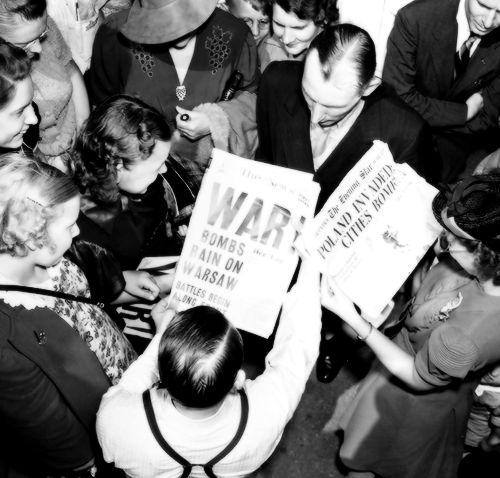

September 1, 1939: The Invasion of Poland begins.
One week after the signing of the Molotov-Ribbentrop Pact, a treaty of non-aggression between Nazi Germany and the Soviet Union, German forces launched an attack against Poland. Preceding events like the occupation of the Rhineland, the Anschluss, the Munich Agreement, and overall the gradual revitalization of all parts of the German military (despite restrictions placed by the Treaty of Versailles) bode ill for Europe, but World War II is considered to have officially begun with the invasion of Poland, and with the declarations of war on Germany by France and Great Britain two days later. Though outmatched, Polish forces held off German (and Russian, after the Soviet invasion began on September 17) forces until the final Army unit surrendered on October 6. Though often viewed as weak, backwards, and obsolete, the Polish military inflicted heavy damage upon German forces within the first days of fighting. Around 200,000 Polish civilians were killed during the action.
The conquered territories were subsequently divided up; some portions were directly annexed by Germany, while one area, which contained Warsaw and Krakow, became the separate General Government. Each of the six major Nazi extermination camps (Auschwitz II, Chełmno, Belzec, Majdanek, Sobibor, and Treblinka) - used in the systematic extermination of nearly 3.5 million people - was established in either the annexed territories or in the General Government of Poland.